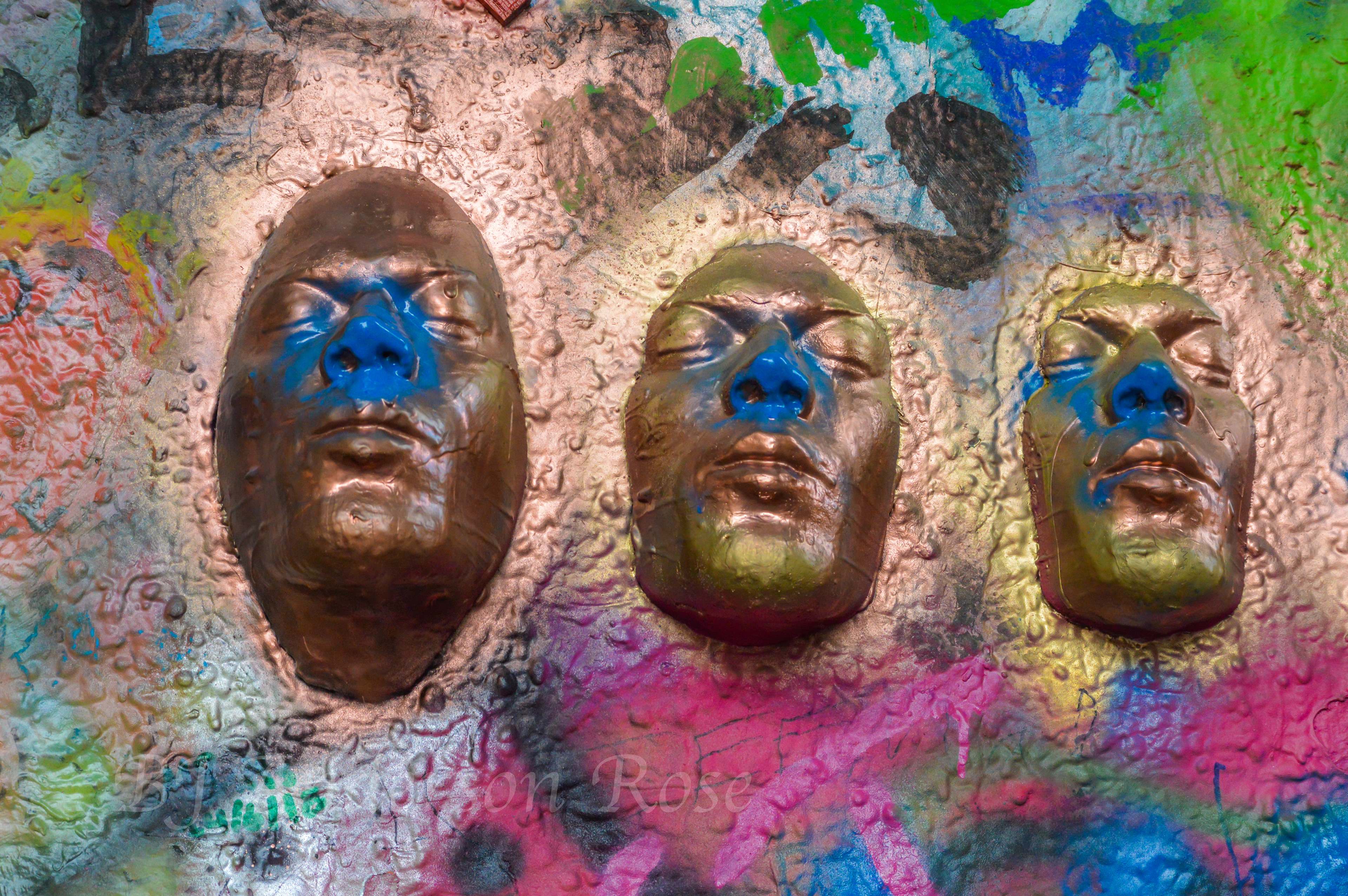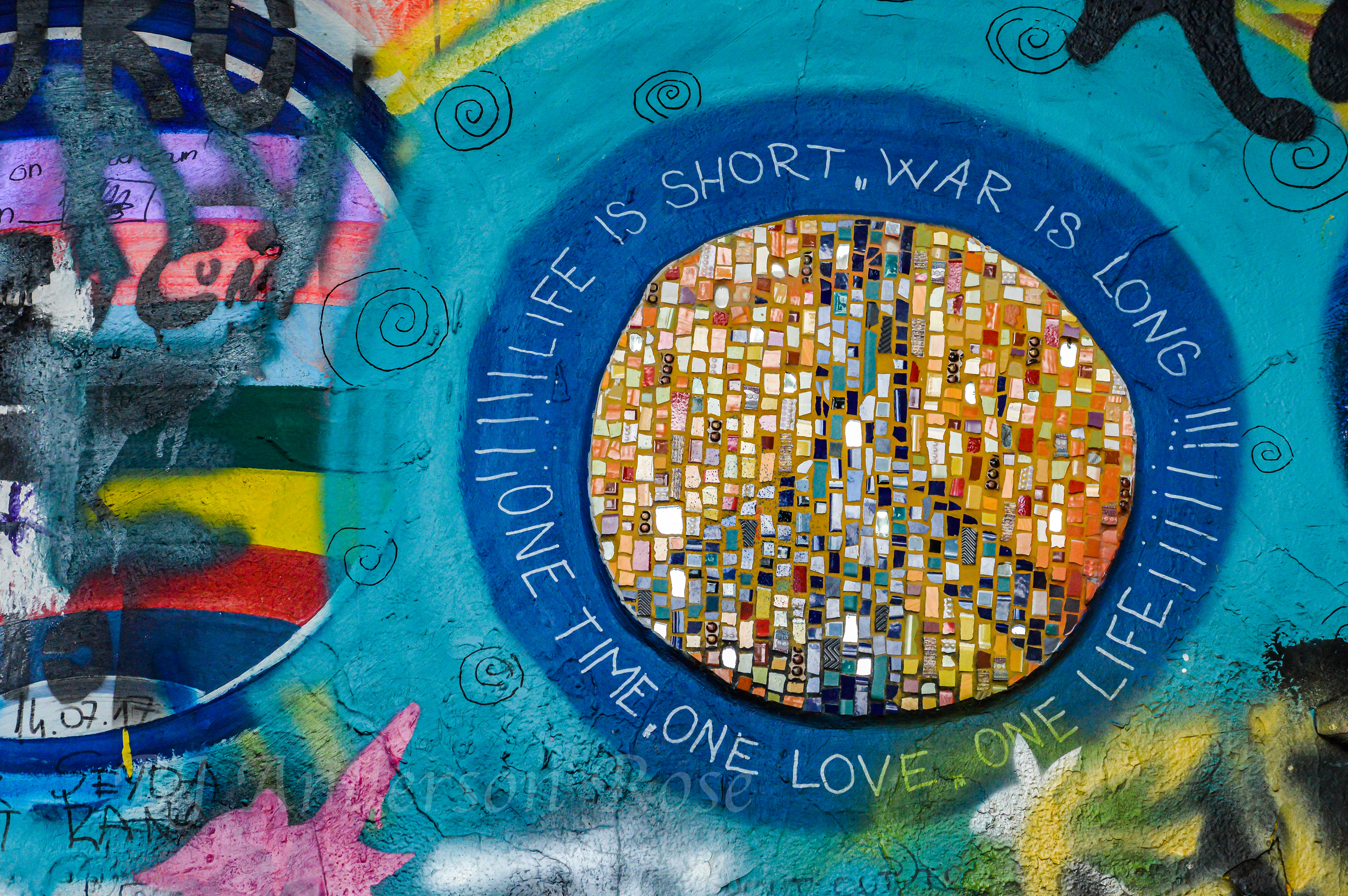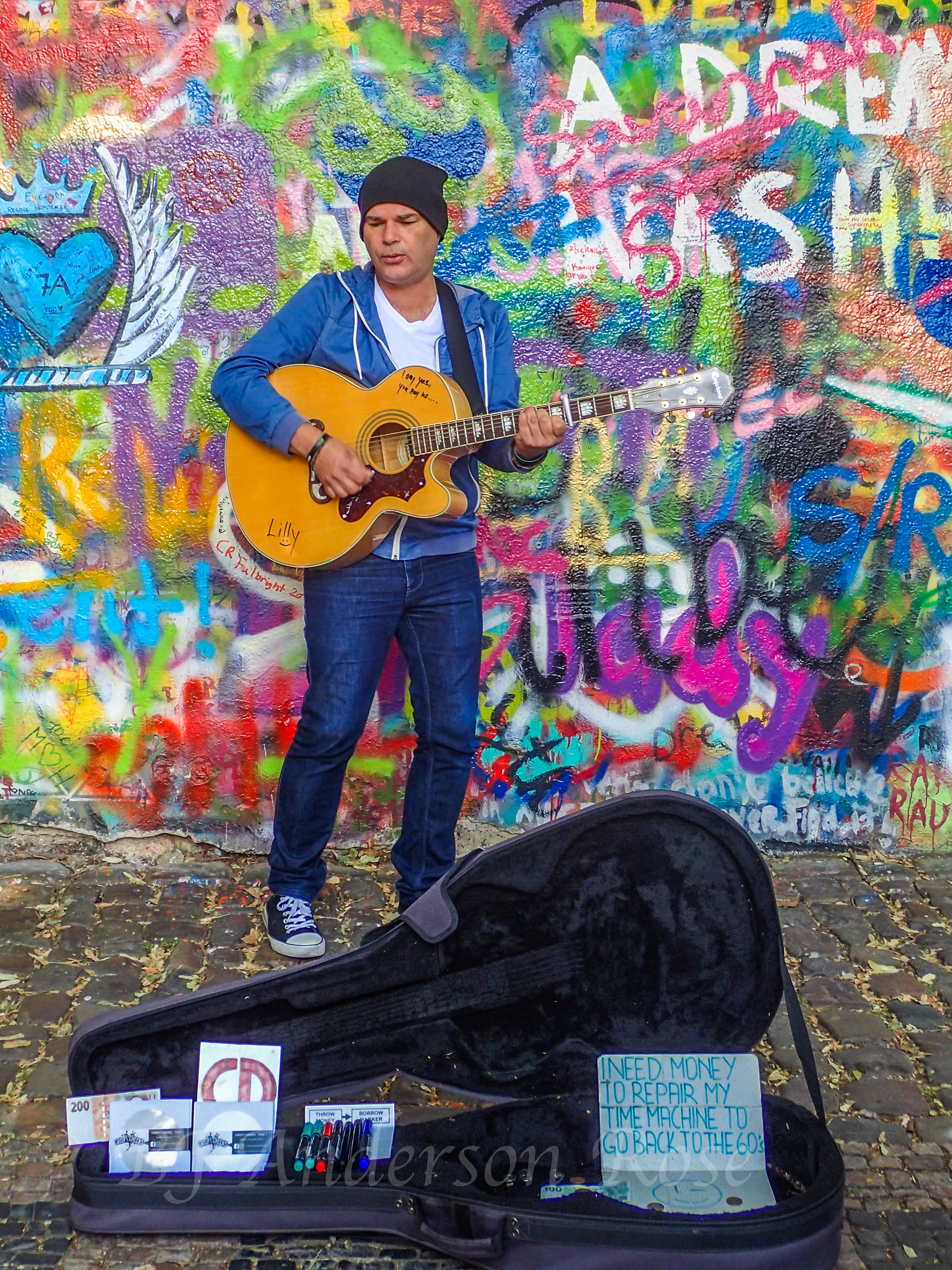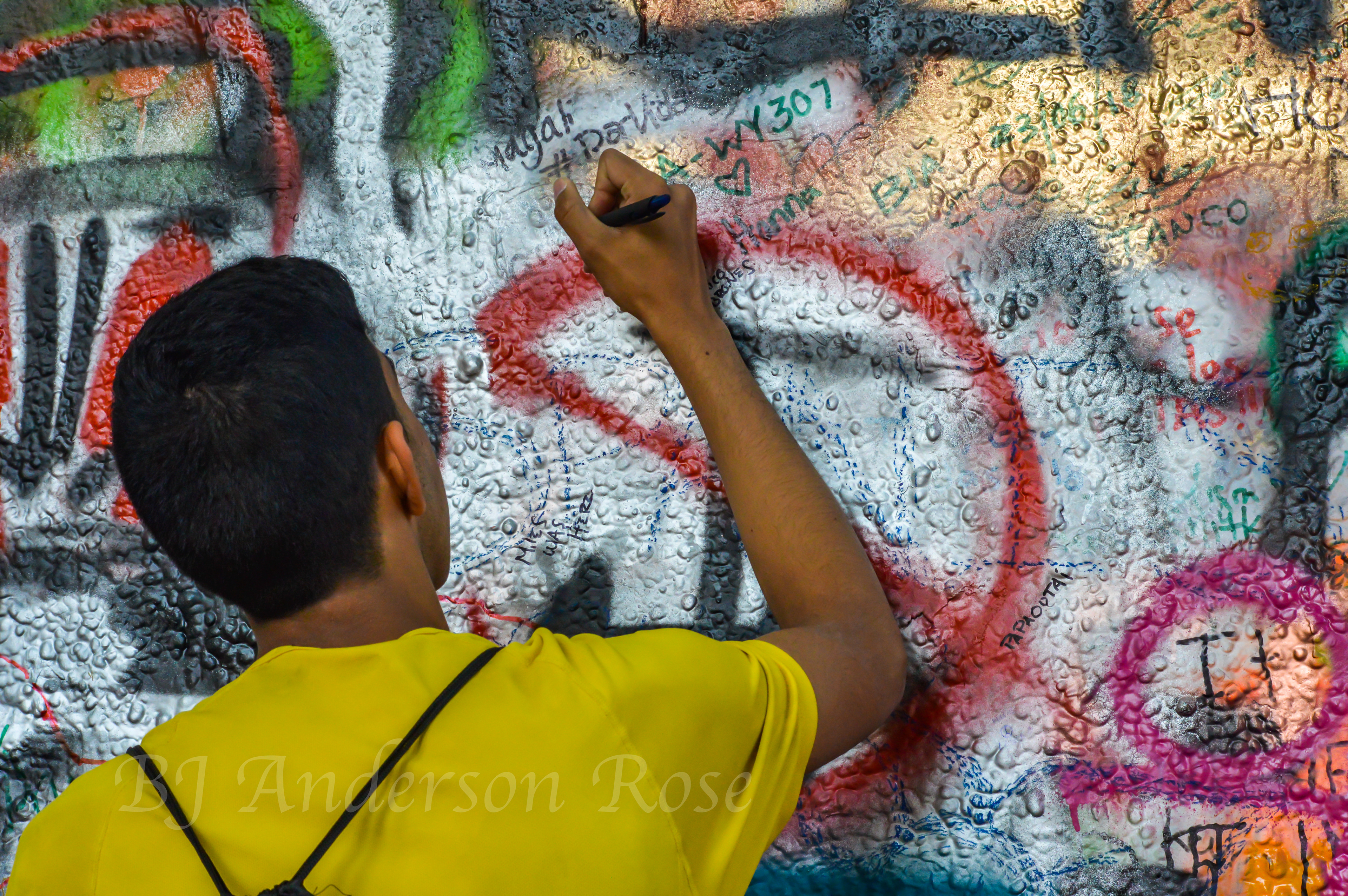




Imagining at the Lennon Wall
Faint music in the distance tells me I am on the right path, guiding me as I walk through the streets of Prague. The lone voice and acoustical guitar become louder. Clearer. Lyrics fill the air. “Imagine all the people living for today.”
I am one of those people, imagining my destination, the Lennon Wall. The stone wall parallels a cobblestone street across from the French Embassy in the Mala Strana district of Prague. Owned by the Order of Malta, the wall blocks the view of the charming Our Lady Under the Chain Church. The French Embassy is across the street. The transition of the wall from ordinary architecture to political muse began with the Communist takeover in the 1940s. Resisters frequently wrote on the wall. When musician John Lennon was murdered in 1980, a new era for the wall began. An artist painted an image of Lennon and some of his lyrics on the wall and hundreds gathered to grieve Lennon’s death. His message of peace and love resonated with young Czechs rebelling against oppression that included restrictions on music. The wall became a richly symbolic place for resistance.
After the dissolution of the Communist regime in 1991, the Lennon Wall continued to be a place for speaking out. Now, artists, music fans and tourists visit to view and contribute to the ever-changing panorama that is both art and portal to beliefs and dreams.
As I round the corner to the wall, I am welcomed by more from the street musician I heard as I approached. “Imagine all the people living life in peace.” The Wall is his backdrop. I smile at him. He nods. He is at peace in this place.
The wall is crowded with words and pictures. People are everywhere. Some quietly walk along the length, stopping to study the everchanging art. I respect their privacy but indulge my curiosity by imagining their intents. I think the earnest young man focused on a colorful image is an art student. The older couple remember the Sunday night when they watched Ed Sullivan introducing the new band—the Beatles. The day they heard about Lennon’s death was early in their marriage. The newspaper with the headline stayed in their living room for months; somehow throwing it away seemed too sad. The musician comes here most days to pay respect and provide the music I am enjoying. “Imagine all the people sharing all the world.”
Groups of teens squeeze between me and the wall to position themselves for selfies. Their disregard for the place as something other than a quick photo opportunity before moving on to the next site in the guidebook is obvious. I don’t feel peace and love. I feel irritation. I remind myself that seeds are being planted through their experience. They will grow up. “I hope someday you’ll join us. And the world will live as one.”
I walk the length of the Wall, and then go back inch by inch, vertically and horizontally. Sensory overload from the crowd gives way to focus on the music and the Wall. I watch a young man pause before a small empty space. He views it intently, then writes with seriousness and reverence. I know that the words and images that are there now will be covered by others if I return on another trip. Maybe next time I’ll find a small space on the wall to write, joining the many before me. What will I write at this place of imaging? I don’t know. Yet.
“You may say I’m a dreamer but I’m not the only one.”